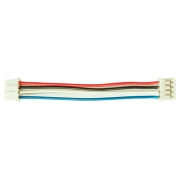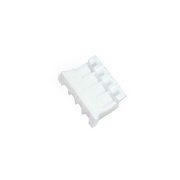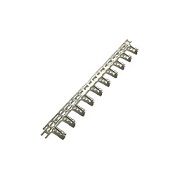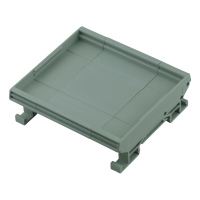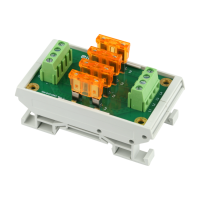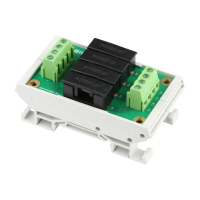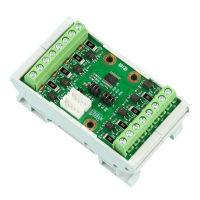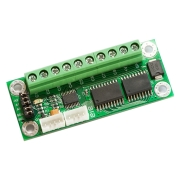*
The RoHS icon on this product indicates that the PCBs, components, solder, and chemicals are all lead-free and RoHS compliant. Additionally, this product is produced using a lead-free process. Unfortunately, we are currently unable to provide documentation confirming that this product is RoHS compliant.
Resources:
*
If your browser cannot display the PDF file properly, please save it to your computer and open it with a PDF reader.
Package Includes:
This package does not include Din-Rail PCB holders and cables.
Notes:
- This package does not include Din-Rail PCB holders and cables.
- This board uses 4-pin connectors for I2C bus.
Features:
- 8 relays on board
- Based on PCF8574
- 100kHz I2C bus frequency
- Addressable via 3 jumpers, supporting up to 8 boards(64 relays) or 16 boards(128 relays)
- Operating power supply voltage: 2.5-5.5Vdc with reverse polarity protection for I2C power supply
- Relay power supply voltage: 18-25v with reverse polarity protection(24Vdc recommended)
- Relay contact rating 10A @120Vac/24Vdc or 6A @250Vac rated for 100,000 life cycles
- Compatible with most microcontrollers
- PCB dimenson: 87.50 x 72.00 mm
This is an I2C relay board, the 2nd version of the I2C-RL824M. It is designed as a remote 8-relay expander for the I2C bus, based on the PCF8574, making it ideal for expanding relay outputs via I2C. The board is compatible with most microcontrollers and supports a 100kHz I2C bus frequency.
The board can be addressed via 3 jumpers, allowing for up to 8 boards (64 relays). Additionally, up to 16 boards (128 relays) can be connected—refer to the board's datasheet for more details.
The operating logic supply voltage is 2.5V - 5.5V, with reverse polarity protection. The relay supply voltage ranges from 18V to 25V, with reverse polarity protection (24V recommended). Each relay has a contact rating of 10A @ 120V AC / 24V DC or 6A @ 250V AC, and is rated for 100,000 life cycles. The board also includes relay power-on protection.
⚠️
Important: To prevent damage to the board, do not plug or unplug I2C cables while the power supply is on. Always turn off the power supply before connecting or disconnecting I2C cables.



